Horticulture and a Tradition of Landscape Design
Melissa Banta January 28, 2012 Archives | History
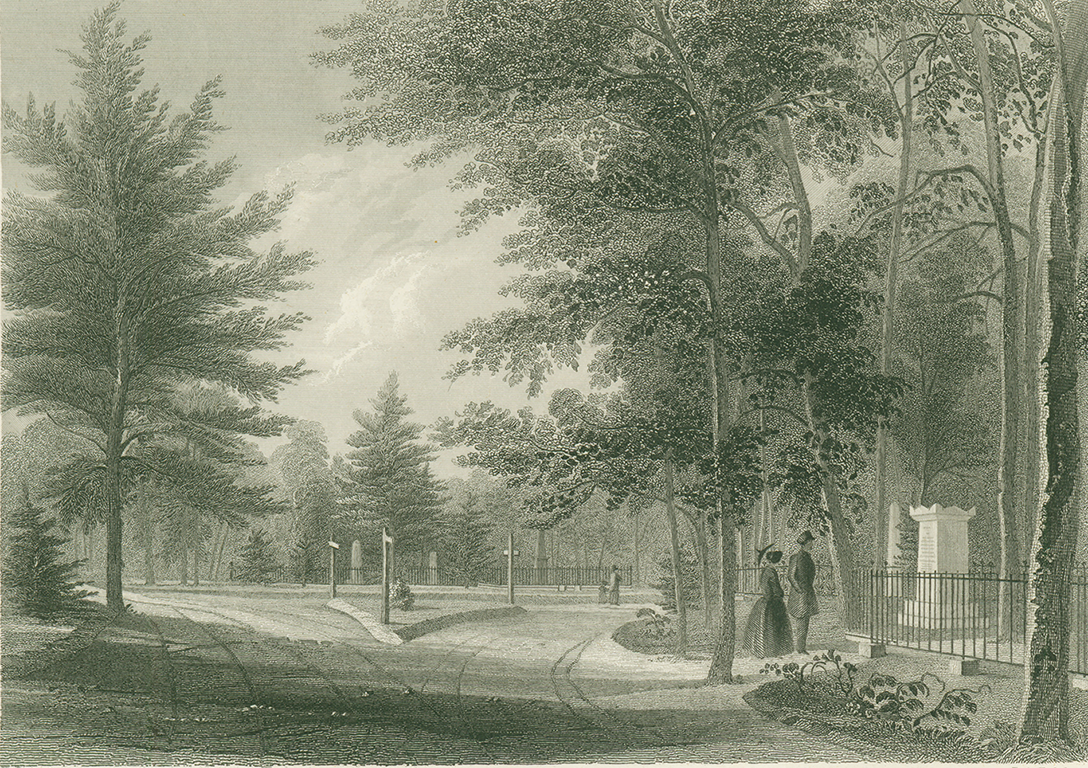
"[At Mount Auburn] horticulture established her temple…there will repose the ashes of the humble and exalted, in the silent and sacred Garden of the Dead."
- Henry Dearborn, 18311
In 1831, shifting ideas about death, burial, and nature would provide fertile ground for the birth of Mount Auburn. Jacob Bigelow, a Harvard physician and botanist, proposed the idea of a rural cemetery, located outside of the urban center. The Cemetery would address the problem of overcrowded burial grounds in the city and offer a place of solace and inspiration for the bereaved in a beautiful, natural setting embellished with ornamental plantings, monuments, fences, fountains, and chapels. Mount Auburn, with its dramatic valleys, seven distinct hills, picturesque ponds and wetlands, and oak, pine, beech, walnut, willow, and cedar trees, presented rich opportunities for the shaping and designing of the new garden cemetery.
Since its founding in 1831, Mount Auburn has created, collected, and preserved documentation of its remarkable horticultural history. “Staff recognize the horticultural legacy it has inherited and intend to pass along this historic landscape for future generations to enjoy,” Dennis Collins, Horticultural Curator at Mount Auburn explains (Sweet Auburn, Fall 2010). Within the Historical Collections Department, landscape historians, planners, horticulturalists, and Cemetery staff can study and compare the rich history and range of horticultural practices at Mount Auburn—from the early years of sheltered monuments in a woodland environment to today’s open spaces and shared memorials. “These records reveal the changing tastes and values of those who imbued Mount Auburn’s landscape with meaning and intent,” Winslow notes. “As such they inform today’s development and preservation efforts by the Cemetery and offer countless opportunities for future scholarship.”
Highlights among the holdings in the Historical Collections Department include:
In 1831, the Massachusetts Horticultural Society purchased “Sweet Auburn,” a tract of land in Cambridge and Watertown, as the setting for America’s first rural cemetery. Alexander Wadsworth, a surveyor and civil engineer, drew the first plan, which reveals the original topography of the site.
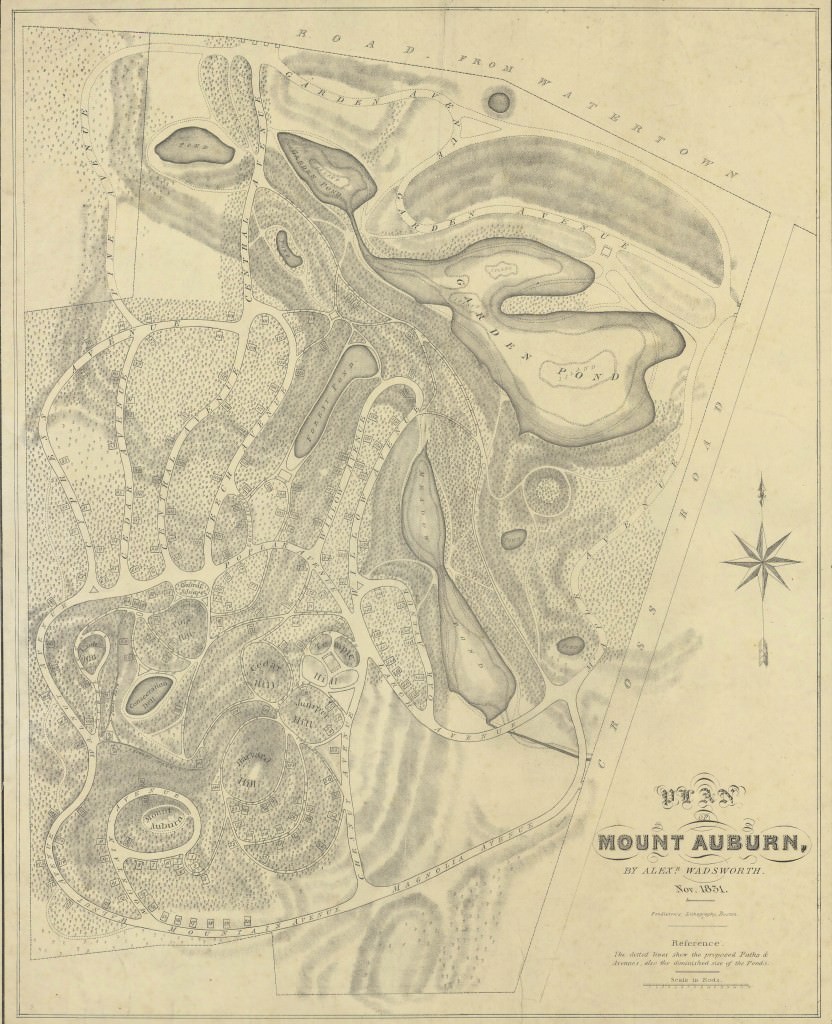
General Henry A. S. Dearborn, the first president of the Massachusetts Horticultural Society, worked with Jacob Bigelow, Alexander Wadsworth, and George Brimmer in the design of Mount Auburn’s landscape during its formative years. Embracing and enhancing the existing natural environment, they laid out the avenues and paths of the Cemetery following English landscape design principles, with thoughtful plantings and the introduction of indigenous trees as well as new species.
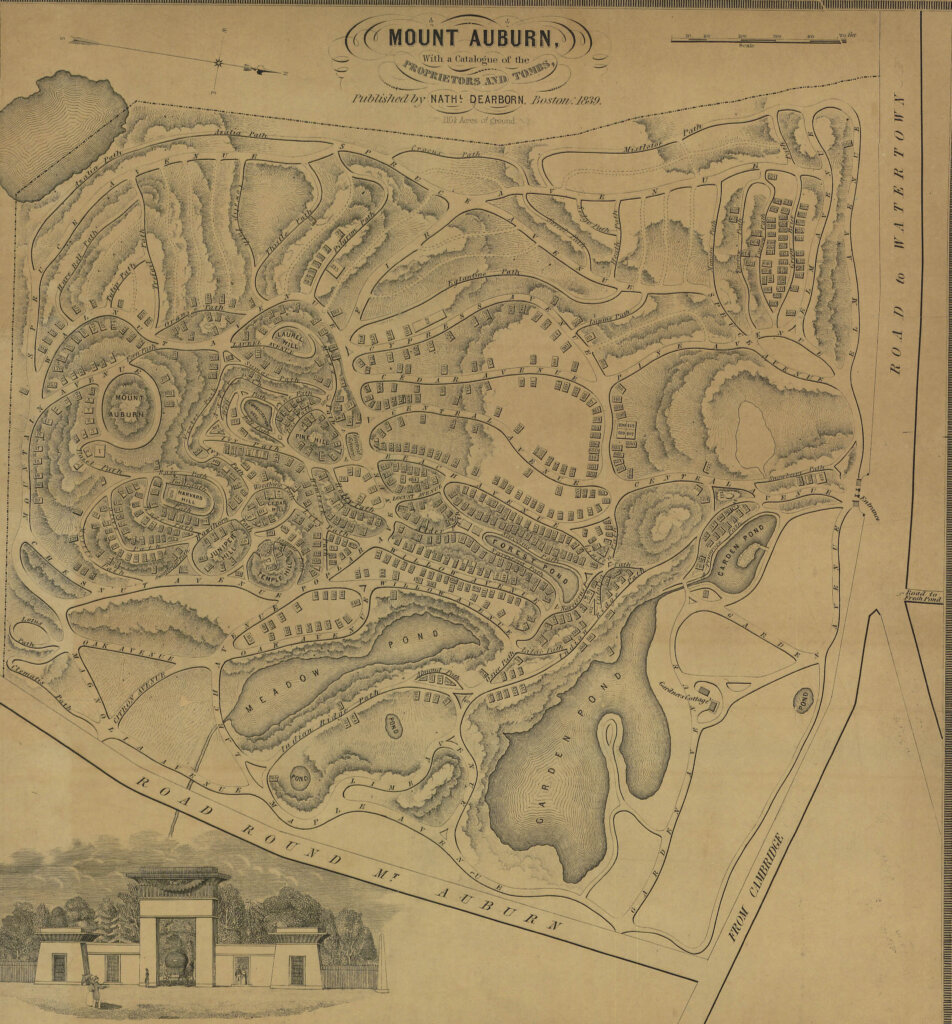
Original 19th-century engravings by James Smillie, W. H. Bartlett, and others appeared in guidebooks to Mount Auburn, and today provide early pictorial views of the Cemetery landscape, trees, and other plants.
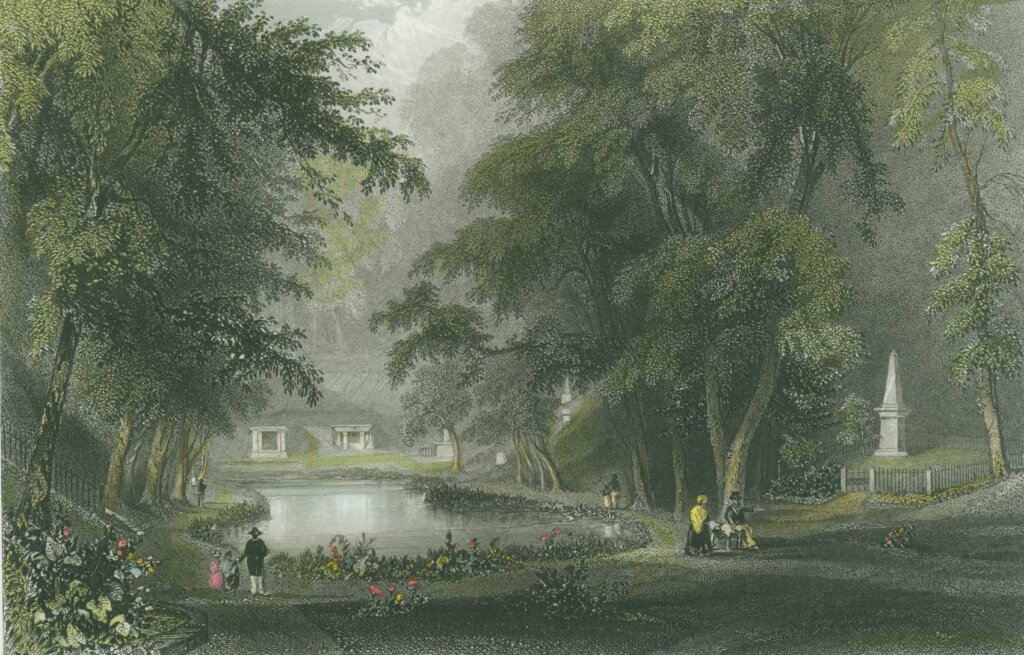
The position of Cemetery gardener, created in 1857, promoted more consistent horticultural practices and a well-cared-for, uniform appearance. A number of intimate snapshots show gardeners who worked at Mount Auburn over the years.
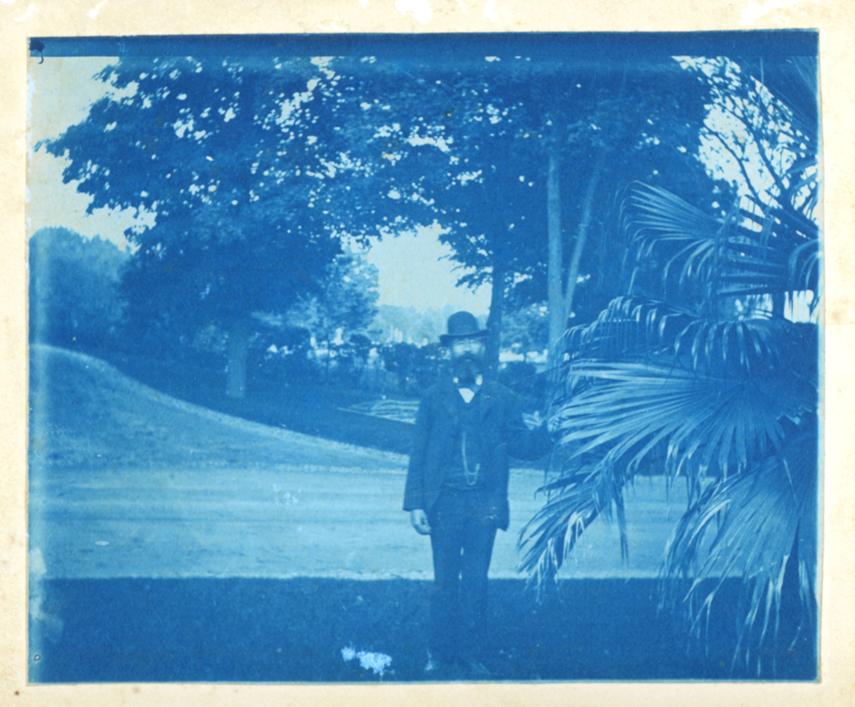
In the 1870s an emphasis on open space and a more park-like nature to the Cemetery (coinciding with the development of America’s public parks) resulted in smaller lots, fewer monuments, and the removal of curbs and cast-iron fences. In his early account of the Cemetery, The History of Mount Auburn, Jacob Bigelow, the founder of Mount Auburn, recommends the removal of over half the trees in order to create “broad vistas and open spaces, through which the works of art could be seen; and the light of the sun might be admitted to the grass and cultivated flowers.”2
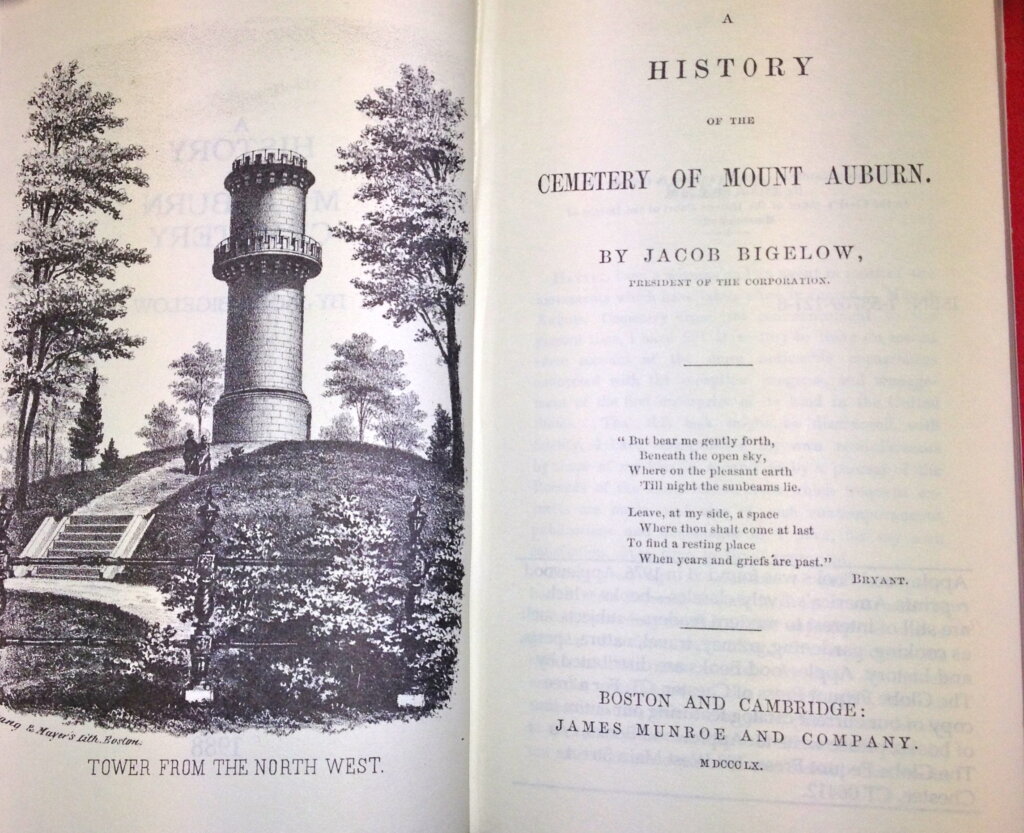
Floral brochures and invoices of the day detail the Cemetery’s purchases of seeds, bulbs, ornamental shrubs, and trees, and an increasing emphasis on new species and varieties of domestic and foreign plants. Seeds and cuttings came from as far away as Chile, Italy, China, and Japan.
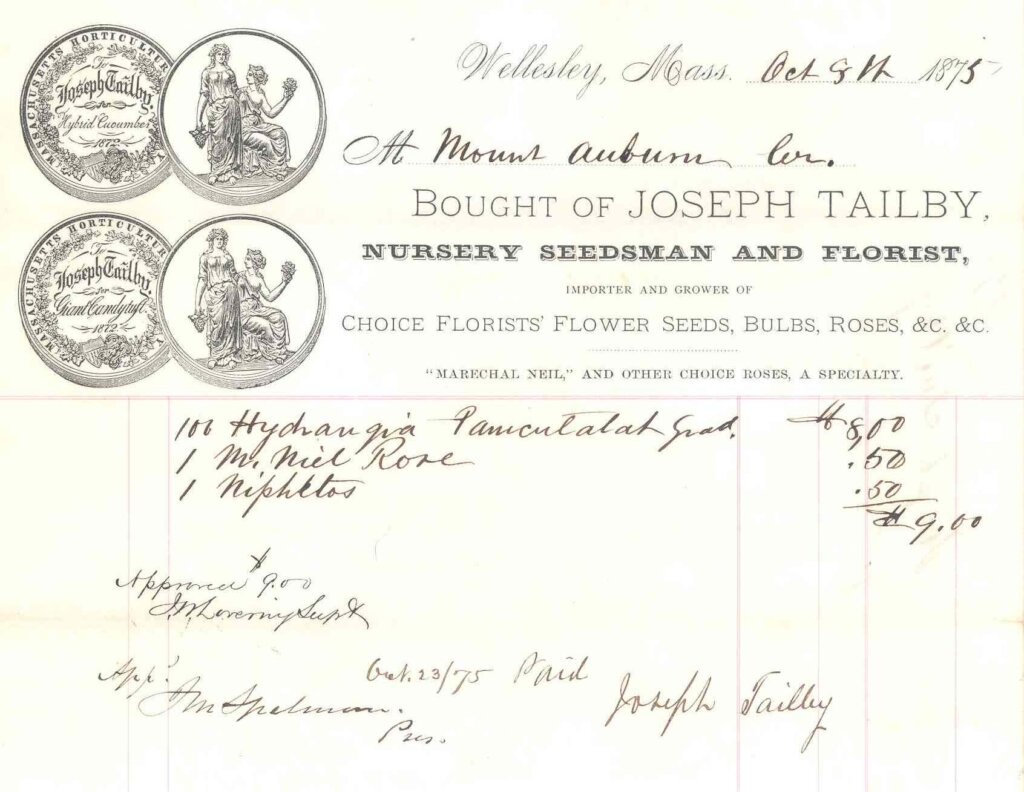
Landscape architects in the 1920s and 1930s included Laurence Caldwell and his successors, Sidney and Arthur Shurcliff. They continued to emphasize a park-like character and estate garden design. The Historical Collections Department maintains files documenting the history of the Willow Pond area, designed by Shurcliff, and other notable designed landscapes within Mount Auburn.
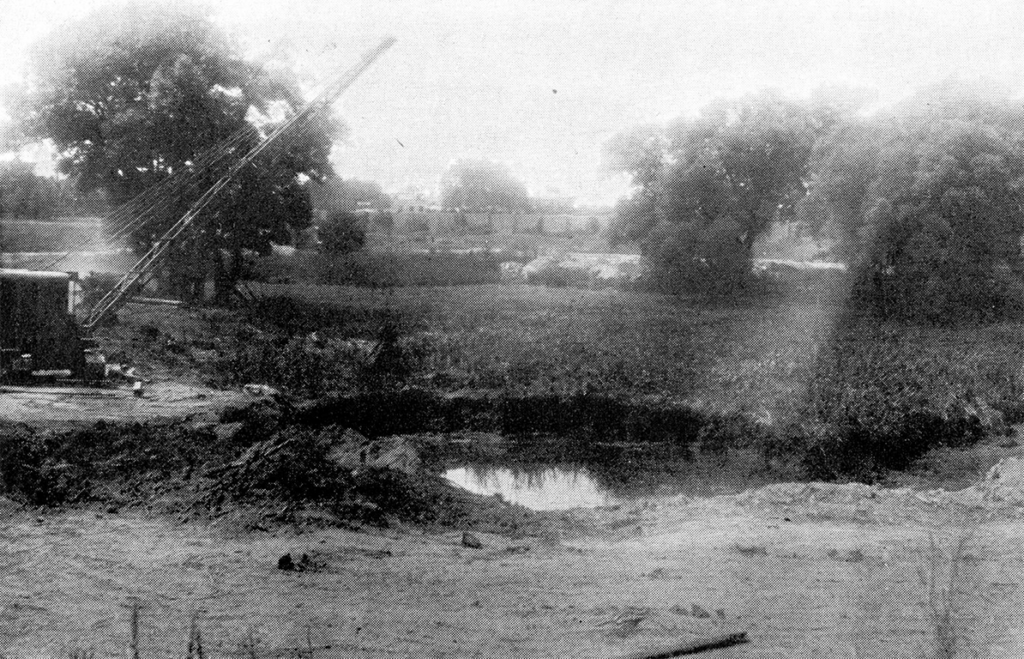
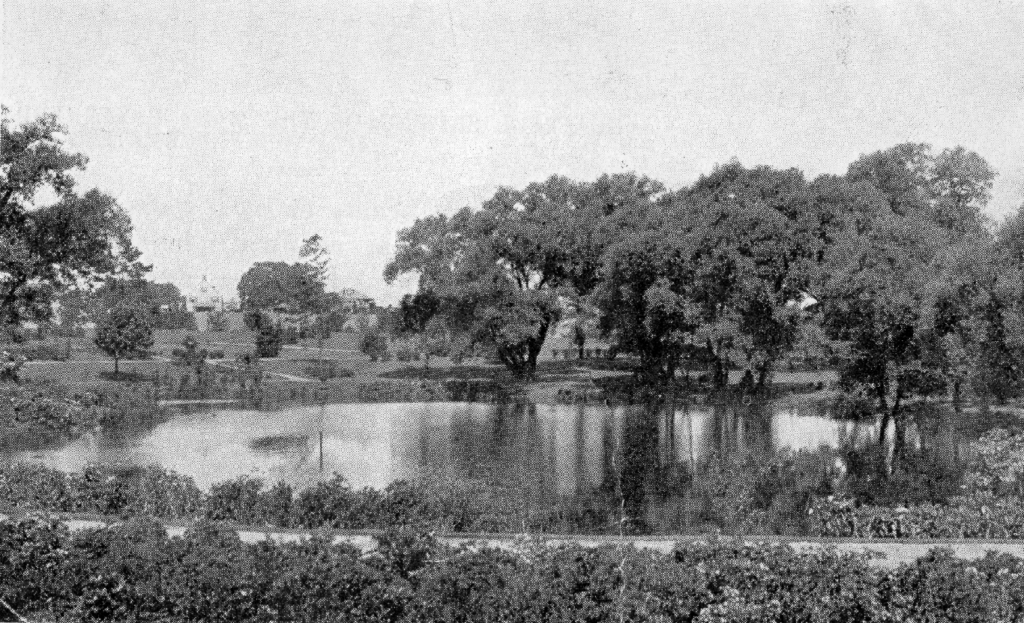
Snapshots taken after the Great New England Hurricane of 1938 document the damage done to Mount Auburn and clean-up efforts that followed. The Cemetery lost over 800 trees at the time.
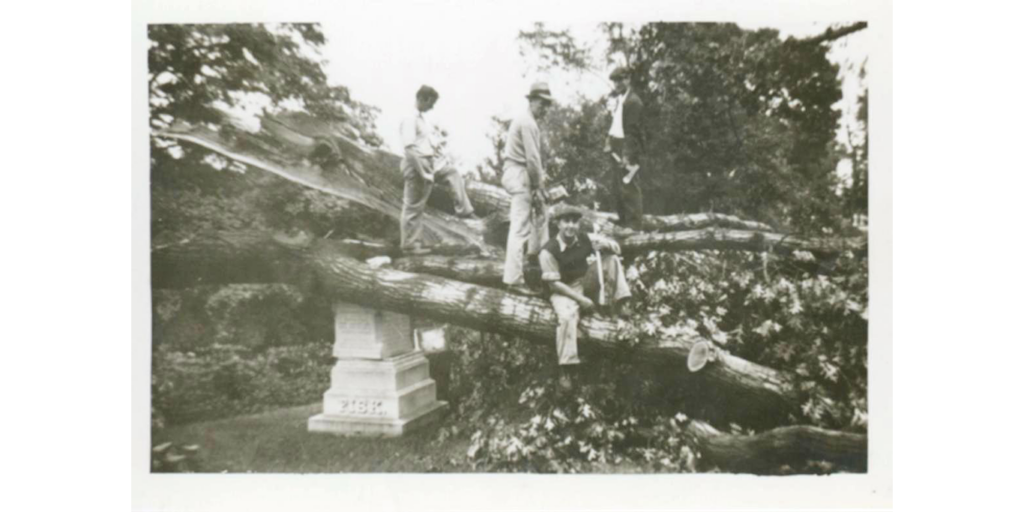
Mount Auburn houses a stunning collection of beautifully executed horticultural plans for individual lots that document both proposed and executed designs. Over the years a number of noted landscape architects, including the Olmsted firm and Fletcher Steele, designed specific family lots.
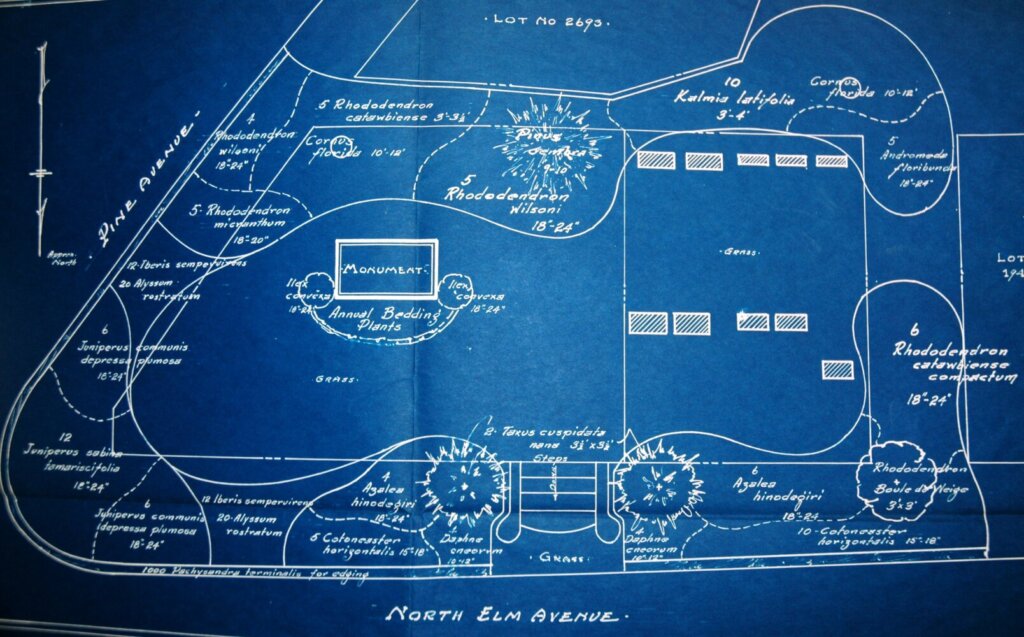
Oakes Ames, president of Mount Auburn from 1934 to 1963, favored natural plantings of flowering shrubs, annuals, and groundcovers, and an increasing diversity of plants as a part of the educational mission of the Cemetery. This period was chronicled by the New England architectural photographer Arthur Cushman Haskell, who created a comprehensive record documenting the Cemetery between 1937 and 1962. Haskell’s crystal clear, detailed images include striking close-up views and long shots of foliage and plantings.
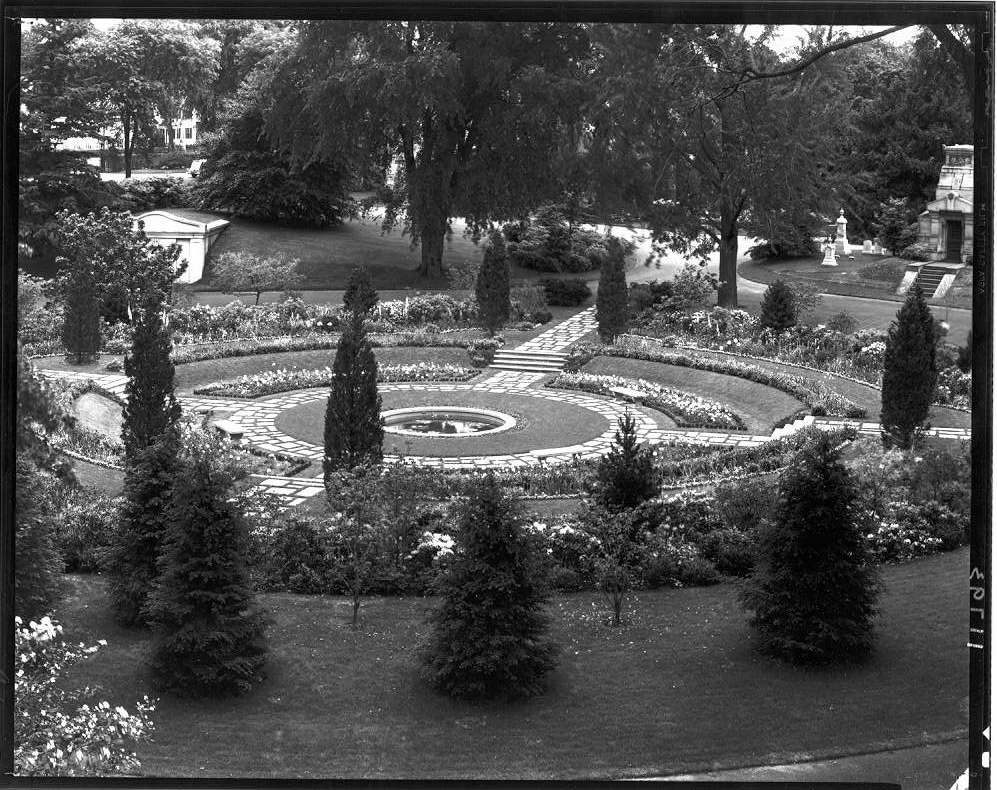
Among the extensive photograph collections, researchers will find many images of the Cemetery’s greenhouses. The first greenhouse was erected in 1856, and by 1884 the Cemetery had six. The buildings offered a protective environment where plants could be started from seeds and cuttings as well as preserved in the winter months.
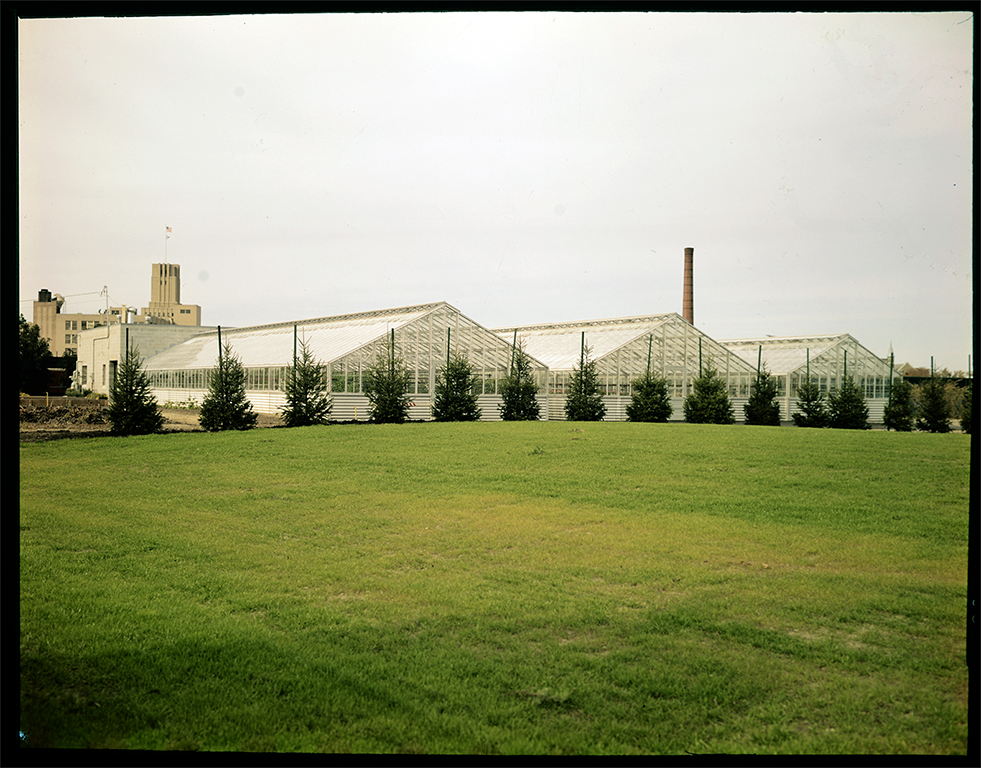
Thousands of photographs taken by former staff member Jennifer Johnston offer striking views into the horticultural history and trends of the early 21st century. Today Mount Auburn’s living horticultural collection embodies nearly 5,000 trees and more than 15,000 plants in a landscape frequented by over 200,000 visitors a year.
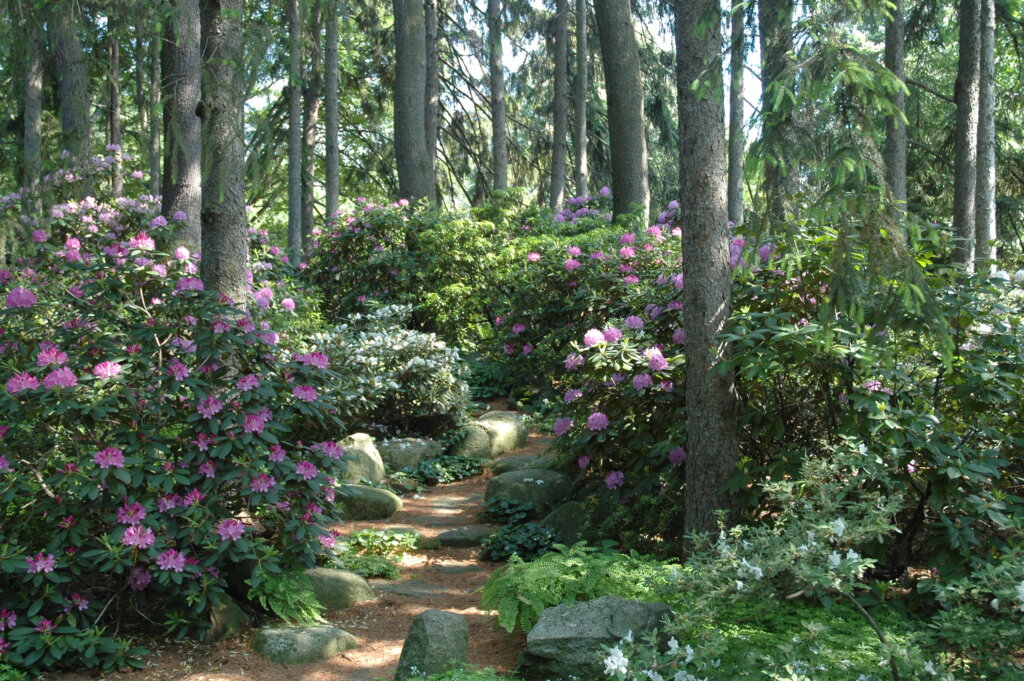
“Horticulture is central to the work we do at Mount Auburn. The subject of horticulture can be found in nearly all the records we create and preserve.”
-Meg Winslow, Curator of Historical Collections
Citations
1 “Proceedings of the Massachusetts Horticultural Society, Oct. 1, 1831,” reported in the New England Farmer and Horticultural Journal, Oct. 5, 1831
2 Jacob Bigelow, The History of Mount Auburn Cemetery, Cambridge: J. Munroe and Company, 1860, p. 121.

Comments
Comments for this post are closed